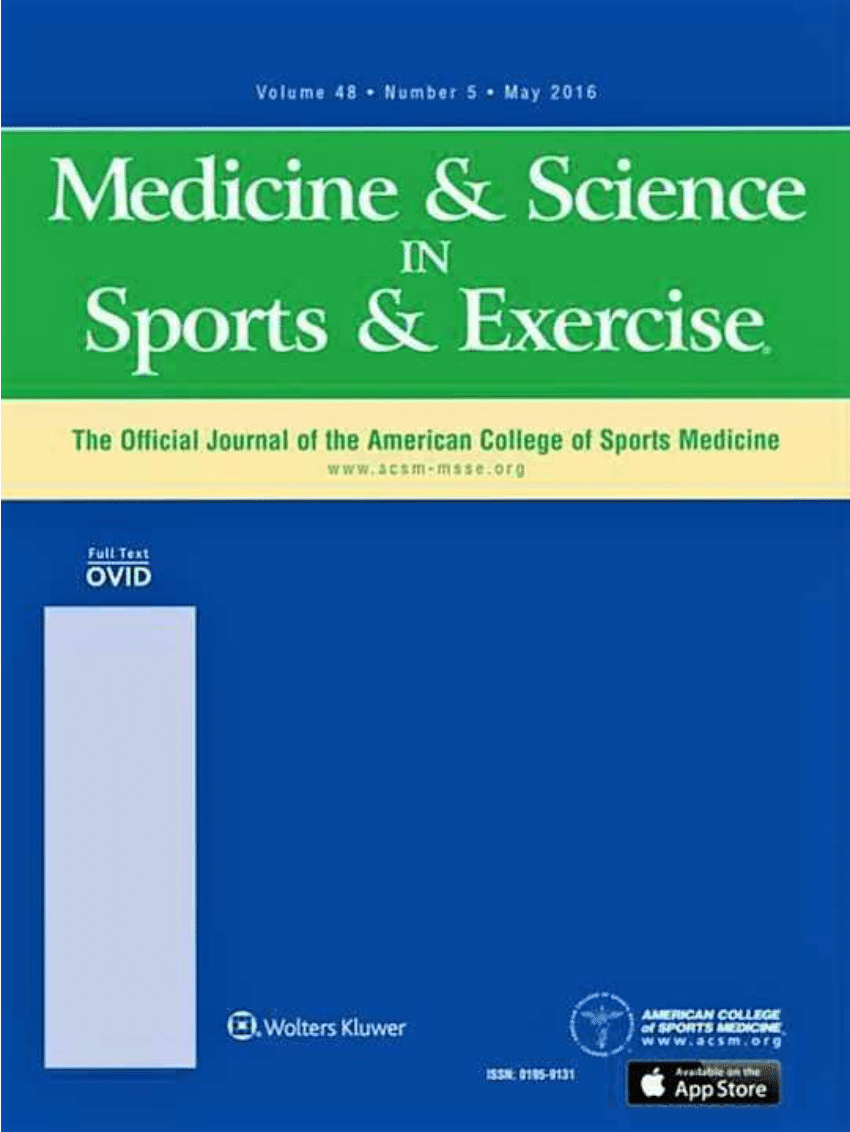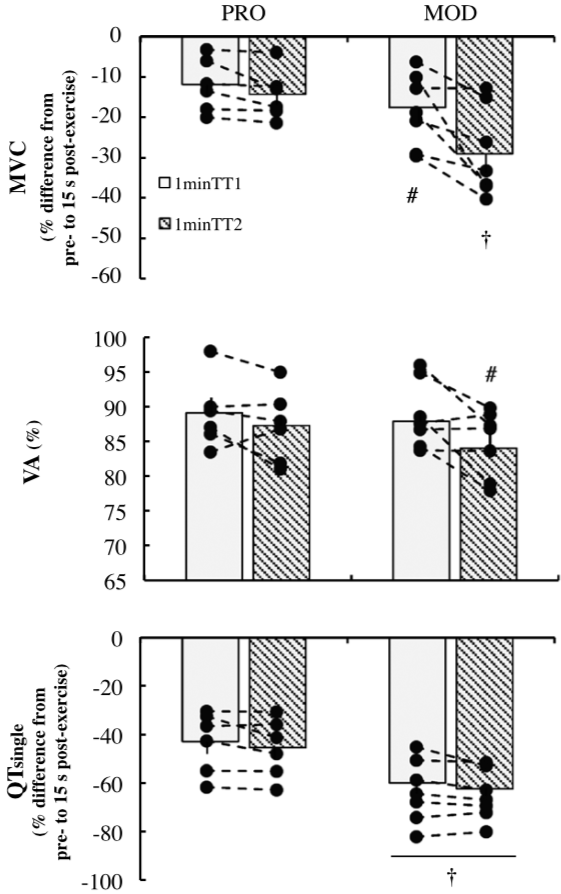Recovery from Fatigue following Cycling Time-Trials in Elite Endurance Athletes.
Recovery from Fatigue following Cycling Time-Trials in Elite Endurance Athletes.


Ducrocq GP, Hureau TJ, Bøgseth T, Meste O & Blain GM
Abstract
INTRODUCTION:We determined the recovery from neuromuscular fatigue in six professional (PRO) and seven moderately trained cyclists (MOD) following repeated cycling time-trials of various intensity/duration.
METHOD:Participants performed two 1-min (1minTT) or two 10-min (10minTT) self-paced cycling time-trials with 5-min of recovery in-between. Central and peripheral fatigue were quantified via pre- to post-exercise (15-s through 15-min recovery) changes in voluntary activation (VA) and potentiated twitch force. VA was measured using the interpolated twitch technique and potentiated twitch force was evoked by single (QTsingle) and paired [10-Hz (QT10) and 100-Hz (QT100)] electrical stimulations of the femoral nerve.
RESULTS:Mean power output was 32-72% higher during all the time-trials and decreased less (-10% vs -13%) from the first to second time-trial in PRO compared with MOD (P<0.05). Conversely, exercise-induced reduction in QTsingle and QT10/QT100 was significantly lower in PRO following every time-trial (P<0.05). Recovery from fatigue from 15-s to 2-min for QTsingle and QT10/QT100 was slower in PRO following every time-trial (P<0.05). In both groups, the reduction in QTsingle was lower following the 10minTTs compared with 1minTTs (P<0.05). Conversely, VA decreased more after the 10minTTs compared with 1minTTs (P<0.05).
CONCLUSION:Our findings showed that excitation-contraction coupling was preserved following exercise in PRO compared with MOD. This likely contributed to the improved performance during repeated cycling time-trials of various intensity/duration in PRO, despite a slower rate of recovery in its early phase. Finally, the time-course of recovery from neuromuscular fatigue in PRO was dependent on the effects of prolonged low-frequency force depression.